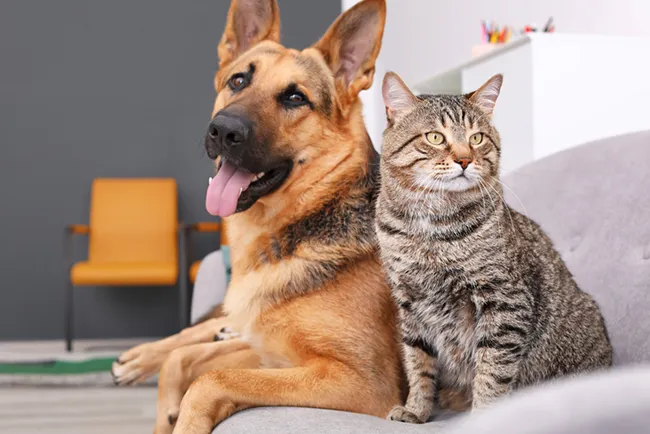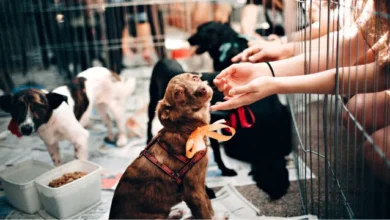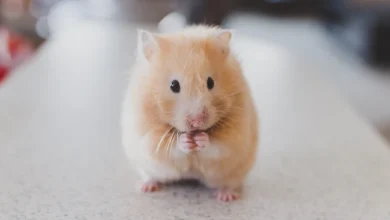
Socialization is a crucial aspect of a pet’s life, significantly influencing their behavior and overall well-being. This process helps pets learn how to interact with various environments, other animals, and people. It’s not just about making them friendly; it’s about assisting them in becoming confident and well-adjusted members of society.
The Impact of Socialization on Behavior
Socialization plays a pivotal role in shaping a pet’s behavior. Well-socialized pets are generally less anxious in new situations, display less fear and aggression towards strangers and other animals, and exhibit fewer behavioral problems. Oksana, a renowned expert from Kitty Land, emphasizes that “proper socialization can prevent many common behavior issues in pets, including excessive barking or meowing, destructive behavior, and fearfulness.”
The Best Time for Socialization
The prime time for socializing pets is during their early life stages. Puppies and kittens are most receptive to new experiences between the ages of 3 weeks and 4 months. During this period, exposure to a variety of people, animals, environments, and experiences is crucial for their development. However, socialization should continue throughout a pet’s life to maintain their social skills.
Socialization and Mental Health
Socialization isn’t just about teaching pets to be social; it also significantly impacts their mental health. Regular social interactions can help prevent anxiety and depression in pets. Pets that are isolated or lack social experiences may become withdrawn, fearful, or aggressive. Integrating diverse experiences and regular social interactions into their routine can vastly improve their quality of life.
The Role of Positive Reinforcement
Positive reinforcement is a key aspect of successful socialization. Rewarding pets for good behavior in social situations encourages them to repeat those behaviors. Treats, praise, and playtime can all be used as positive reinforcements.
Challenges in Socialization
It’s important to recognize that not all pets socialize at the same rate or in the same way. Some may require more time and patience, especially if they’ve had negative experiences in the past. Oksana advises that “if your pet shows signs of extreme anxiety or aggression, it’s crucial to seek the help of a professional to address these issues in a safe and effective manner.”
Socialization Tips for Dogs
Early socialization strategies are vital. Expose your puppy to different environments, sounds, people, and animals in a controlled manner. Remember, it’s not just about quantity but also the quality of these interactions. Introducing your dog to new people and other pets should be a gradual and positive experience. However, challenges like fearfulness or aggression might arise. In these cases, patience and sometimes professional guidance are key.
Socialization Tips for Cats
Cats, often perceived as solitary creatures, also benefit greatly from proper socialization. Understanding cat behavior is the first step. They value a safe and predictable environment, so creating a cat-friendly space is essential. Socializing adult cats might require more patience. Start with short, positive interactions and gradually increase their duration. Always observe your cat’s comfort level and retreat if necessary.
Mixed Pet Households
Integrating dogs and cats under one roof can be challenging but immensely rewarding. The key lies in understanding their distinct languages and respecting their unique personalities. Here’s a deeper look into making this cohabitation peaceful and enjoyable for everyone involved.
Introducing Dogs to Cats
When introducing a dog to a cat, start by controlling the environment. Keep the dog on a leash and allow the cat to roam freely. This gives the cat the autonomy to approach or retreat as it feels comfortable. Use treats to reward calm and non-aggressive behavior in both pets. Gradually increase their exposure to each other, always under close supervision, until they seem relaxed in each other’s presence.
Introducing Cats to Dogs
Cats generally require more time to adjust to changes in their environment. When introducing a cat to a dog, give the cat a safe, elevated space to observe the dog from a distance. Encourage the dog to remain calm and avoid chasing the cat, even in play. Use barriers like baby gates to allow them to see and smell each other without physical contact initially.
Understanding Body Language
Recognizing the body language of both dogs and cats is crucial. A wagging tail in a dog might indicate excitement, but in a cat, it could signal irritation or aggression. Look for signs like hissing, growling, or raised hackles, which indicate that one of the pets is stressed or threatened. On the flip side, relaxed postures, gentle tail wags, and purring suggest acceptance and comfort.
Managing Their Interactions
Consistent, positive interactions are key. Encourage gentle play and reward both pets for good behavior around each other. If either pet shows signs of stress or aggression, calmly separate them and try again later. It’s important to not rush the process and allow them to set their pace for acceptance.
Creating Harmony in a Mixed Pet Household
To create a harmonious household, ensure each pet has its own space, including separate feeding areas and resting spots. Invest in toys and enrichment activities that they can enjoy individually or together. Remember, some dogs and cats may never become best friends, but with patience and understanding, most can learn to coexist peacefully.
Advanced Socialization: Group Settings
Taking your pet into group settings like dog parks, pet-friendly cafes, or social events can greatly enhance their social skills and overall well-being. However, it requires preparation, observation, and a good understanding of your pet’s personality.
Preparing Your Pet for Group Settings
Before venturing into group environments, ensure your pet is comfortable with basic obedience commands such as ‘sit’, ‘stay’, and ‘come’. This basic training helps in managing your pet’s behavior in unpredictable situations. It’s also important to assess your pet’s current comfort level around other animals and people. Start with smaller groups or quieter settings and gradually work up to busier environments.
Ensuring Your Pet’s Comfort
Watch for signs of stress or discomfort in your pet, like excessive panting, yawning, licking lips, or trying to leave the area. Always prioritize your pet’s comfort and be ready to leave if they seem overwhelmed. It’s crucial to recognize that not all pets thrive in group settings, and that’s perfectly okay.
Safety Tips in Group Settings
Leash your pet in unfamiliar settings until you are confident in their ability to respond to your commands amidst distractions. Vaccinations and health checks are crucial before exposing your pet to group settings to protect both your pet and others. Be aware of the surroundings and potential hazards, such as aggressive animals, unattended food, or unsafe terrain.
Social Etiquette in Group Settings
Respect other pets and owners. Ask before allowing your pet to approach others. Be mindful of your pet’s behavior and be ready to intervene if play becomes too rough or if your pet becomes a nuisance to others. Clean up after your pet. Responsible pet ownership is key in shared spaces.
Building Positive Experiences
Encourage and reward your pet for positive interactions with others. Use treats, praise, or their favorite toy to reinforce good behavior. Positive experiences in these settings can boost your pet’s confidence and social skills.
When to Seek Professional Help
If you encounter persistent challenges in socializing your pet in group settings, consider seeking advice from a professional trainer or behaviorist. They can provide tailored strategies to address specific issues and help make group socialization a more enjoyable experience for you and your pet.
Recognizing and Addressing Socialization Issues
Not all pets socialize at the same pace, and that’s okay. Be on the lookout for signs of socialization problems like excessive fear, aggression, or withdrawal. In such cases, it’s important to seek professional help.



